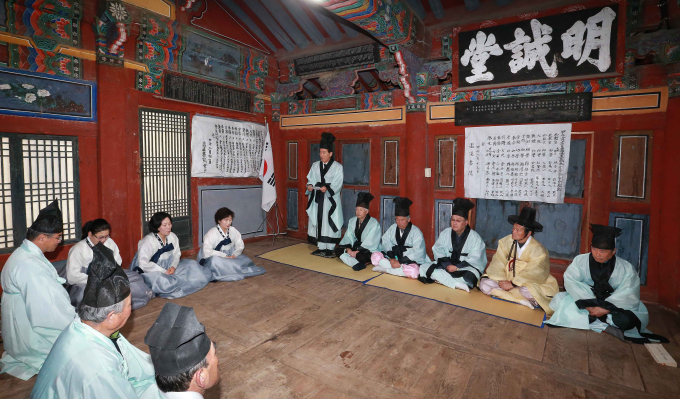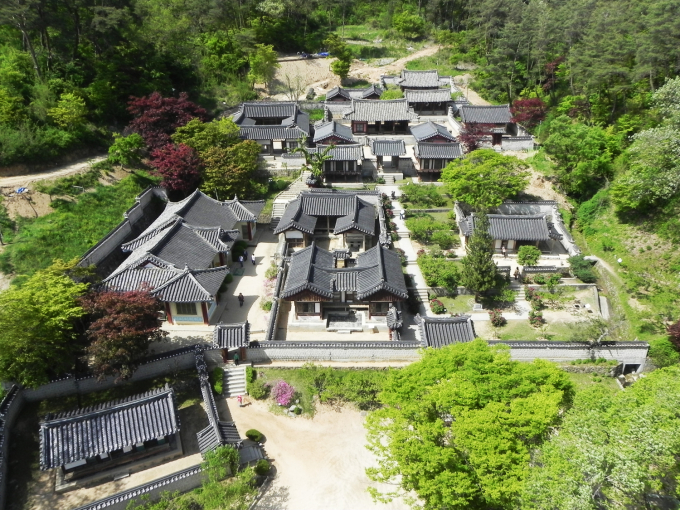Seowon: the true value of education preserved
Oct 28, 2020 (Gmt+09:00)
LG Chem to sell water filter business to Glenwood PE for $692 million


KT&G eyes overseas M&A after rejecting activist fund's offer


Mirae Asset to be named Korea Post’s core real estate fund operator


StockX in merger talks with Naver’s online reseller Kream


Meritz backs half of ex-manager’s $210 mn hedge fund



The seowon, which marked the beginning of Korea’s education culture, sprung up from a belief of Joo Se-Bung, a Joseon Dynasty scholar: “The reason why heaven gives birth to people and they are human is because there is education.” In Korea, where the overheated education culture focused on college entrance exams has become a global issue, the news of UNESCO's registration of Seowon, Korean Neo-Confucian Academies as a World Heritage Site reminds us of the true value of education.
HISTORY OF THE SEOWON
In the Joseon Dynasty, educational institutions were divided into hyanggyo,national educational institutions, and seowon, private educational institutions, with Sungkyunkwan -- then the nation's foremost education institution and now a university on the original site -- at the summit. Seowon, which can be thought of as private university, pursued a temperate and frugal architectural style based on Neo-Confucianism and the spirit of Confucianism.

Seowon, originally a nickname for small educational institutions such as seodang (village schools), became the first educational institutions to combine academic and religious education when Joo Se-bung founded Baekundong Seowon in 1543 (now Sosu Seowon Confucian Academy) to commemorate Korea's first-known Confucian Ahn Hyan from the 13th century.
After its foundation, Baekundong Seowon was promoted to a state-certified Saek Seowon, and then seowon began to spring up around the country to become the central educational institutions of the Joseon Dynasty. The 17th and 18th centuries were considered as seowon's glory years in that 600 Seowon were operated nationwide. In the early days of the seowon, these places of learning had positive functions such as fostering younger students and maintaining order in the local community by holding ancestral rites for ancient sages. But as the Seowon became crowded, warring interest groups of the local Yangban class, which were controlled by blood ties, regionalism, academic cliques and party factions, led to the downfall of the seowon. Eventually, in 1871, Heungseon Daewon-gun carried out a massive abolition of seowon, and only 47 seowon survived. About 150 years later, nine forgotten seowon have became part of this world-class cultural heritage site and thus protected.
WORLD-RECOGNIZED VALUE OF SEOWON
Korean architects often cite seowon as highlights of traditional architecture, especially Dosan Seowon and Byeongsan Seowon in Andong. Instructors established a Neo-Confucian order at these Seowon, and at the time, students devoted themselves to studying and resting, writing and reciting poems, and enjoying relaxation and nature in an educational system designed to blend with nature. The ideal was not to cling to success or power, but to give up greed and covetousness, and to follow the order of nature. Pupils learned to become adults at their own pace, staying as long as they wanted, without restrictions on grades or semesters.
Seowon are special spaces of learning combining the harmony and of hanok architecture within the establishment and the order of nature beyond the elegant stone wall. The true value of education can be felt in this place.
-

-

-
 Travel & LeisureKorean hotels bask in rising foreign visitors; travel agencies in trouble
Travel & LeisureKorean hotels bask in rising foreign visitors; travel agencies in troubleApr 22, 2025 (Gmt+09:00)
-
 Beauty & CosmeticsPackaging rides K-beauty wave: Shares of cosmetics container makers soar
Beauty & CosmeticsPackaging rides K-beauty wave: Shares of cosmetics container makers soarApr 21, 2025 (Gmt+09:00)
-
 Food & BeverageIndia: Tantalizing frontier for K-food’s global ambitions beyond China
Food & BeverageIndia: Tantalizing frontier for K-food’s global ambitions beyond ChinaApr 18, 2025 (Gmt+09:00)


